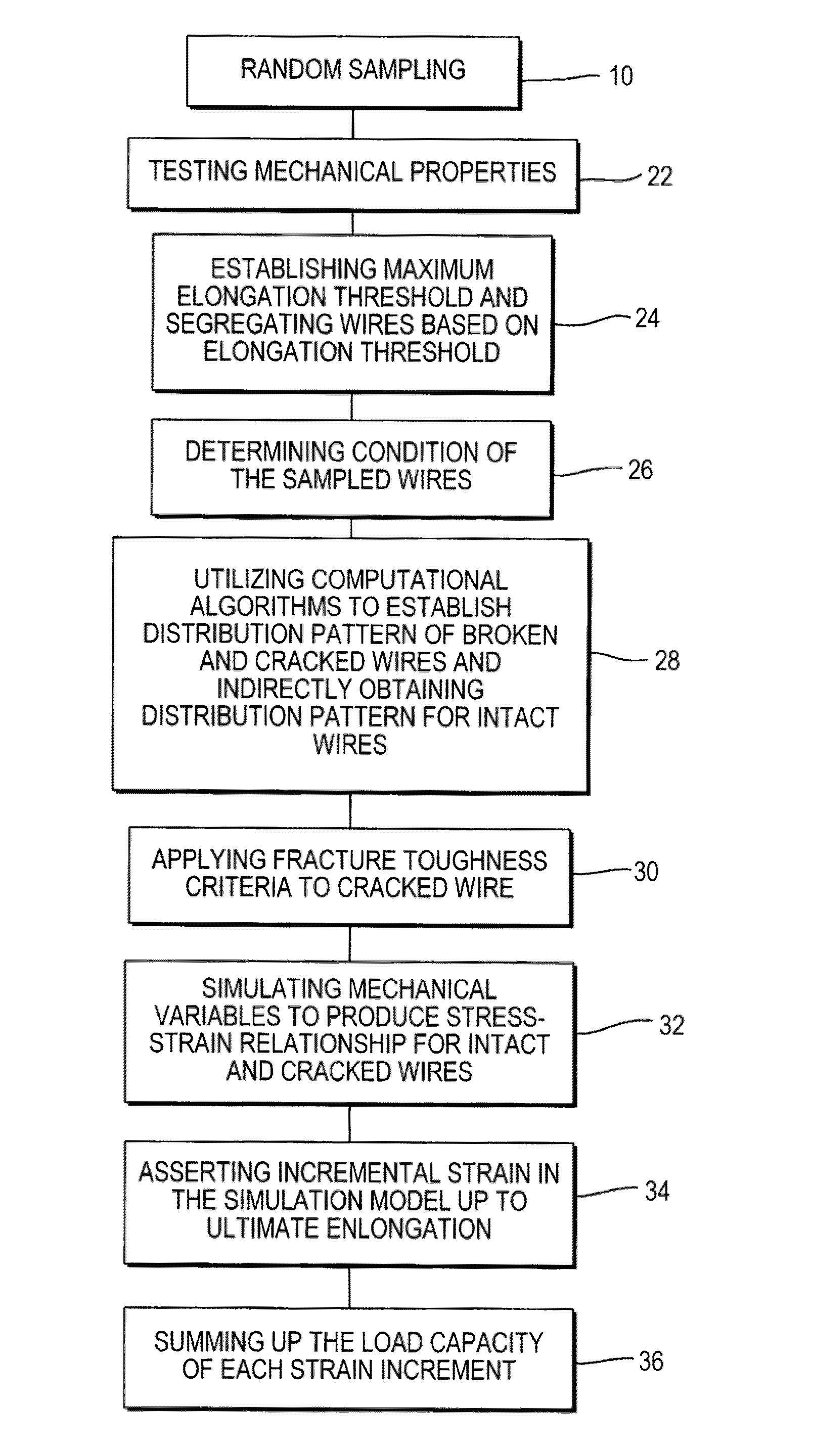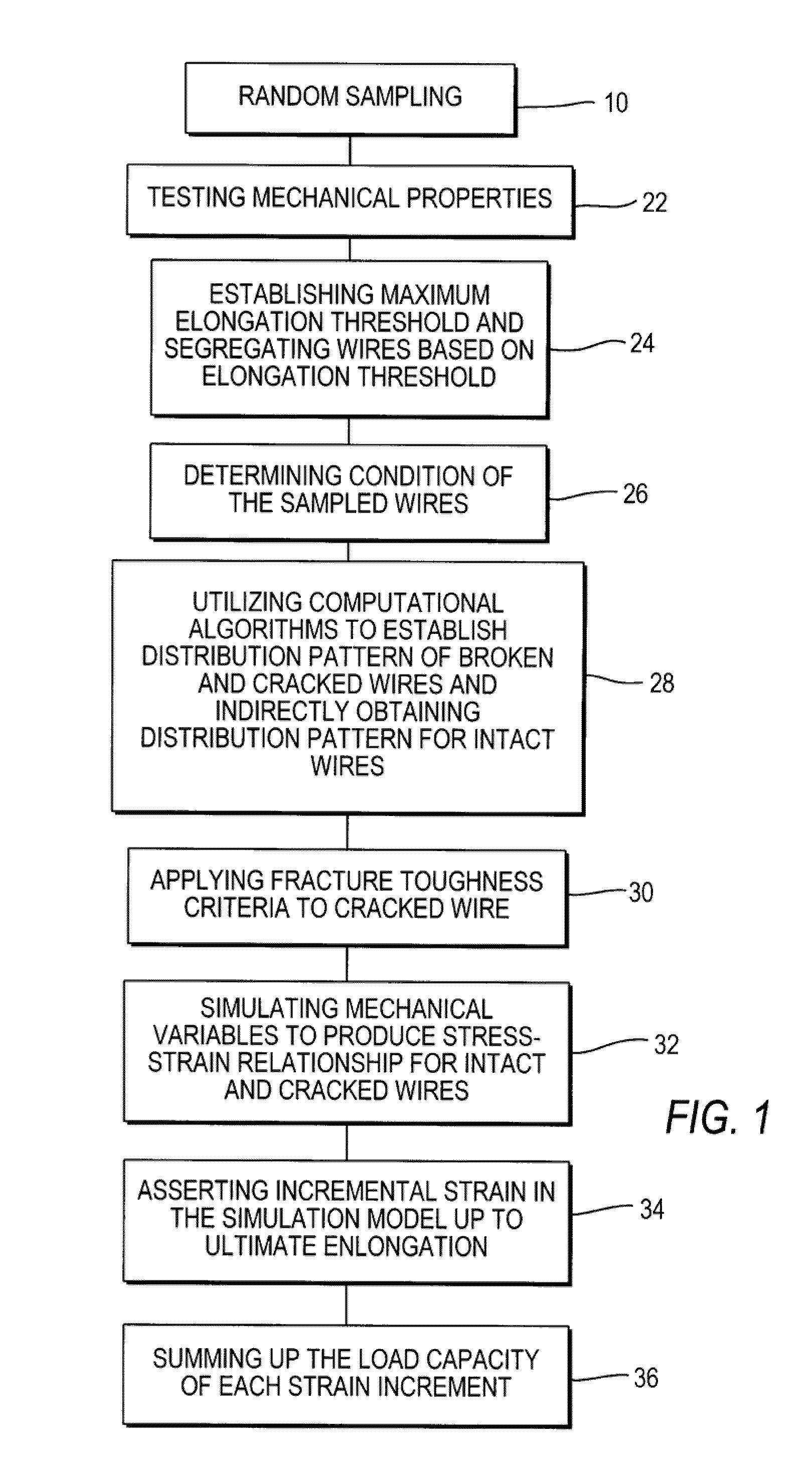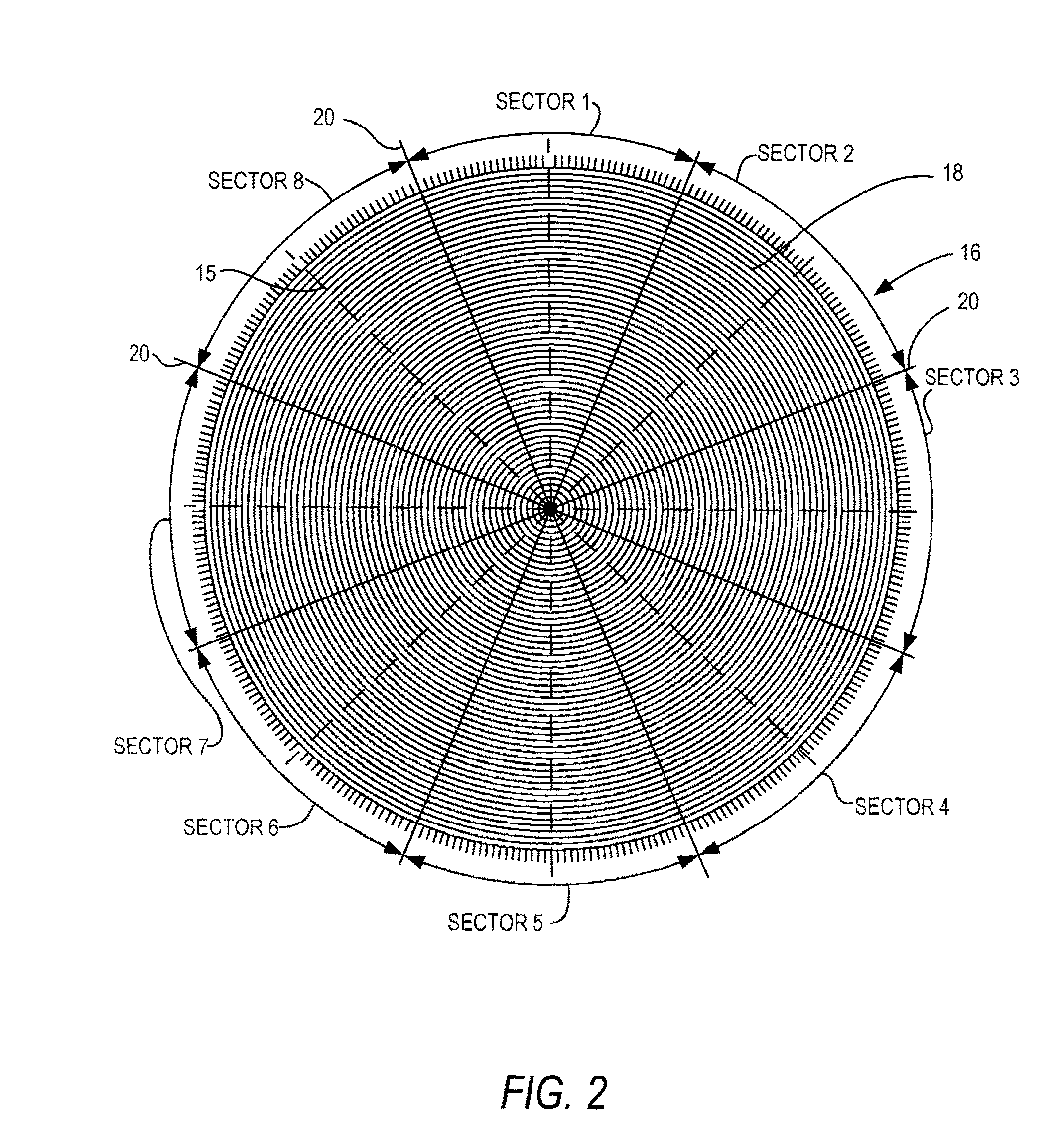Method for assessment of cable strength and residual life
a residual life and cable technology, applied in the field of measuring and testing methods, can solve the problems of affecting the reliability of the method, and affecting the strength of the cable, so as to achieve the effect of minimizing the vulnerability
- Summary
- Abstract
- Description
- Claims
- Application Information
AI Technical Summary
Benefits of technology
Problems solved by technology
Method used
Image
Examples
Embodiment Construction
[0038]With specific reference now to the drawings, it is stressed that the particulars shown and described herein are for the purpose of illustrative discussion of the process of this invention and are presented in the cause of providing what is believed to be the most useful and readily understood description of the principles and conceptual aspects of this invention. In this regard, no attempt has been made to show the process in more detail than is necessary for a fundamental understanding of the invention however, the description, in combination with the drawings, should make apparent to those skilled in the art how the process may be applied in practice.
[0039]The invention will now be described with reference to the flowchart of FIG. 1. The initial step, as shown in FIG. 1, is the random sampling of the wires within the cable denoted at 10 that takes place during inspection of the cables. The purpose of the inspection is to detect cable deterioration sites and to preferably rem...
PUM
| Property | Measurement | Unit |
|---|---|---|
| depth | aaaaa | aaaaa |
| threshold elongation | aaaaa | aaaaa |
| ultimate elongation | aaaaa | aaaaa |
Abstract
Description
Claims
Application Information
 Login to View More
Login to View More - R&D
- Intellectual Property
- Life Sciences
- Materials
- Tech Scout
- Unparalleled Data Quality
- Higher Quality Content
- 60% Fewer Hallucinations
Browse by: Latest US Patents, China's latest patents, Technical Efficacy Thesaurus, Application Domain, Technology Topic, Popular Technical Reports.
© 2025 PatSnap. All rights reserved.Legal|Privacy policy|Modern Slavery Act Transparency Statement|Sitemap|About US| Contact US: help@patsnap.com



